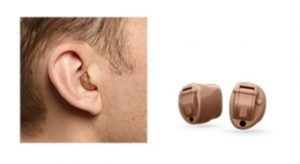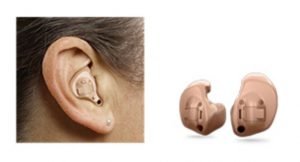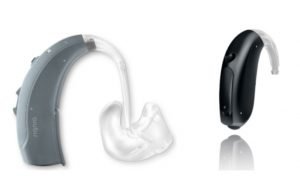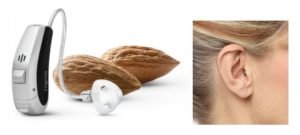Modern hearing aids and devices come in a variety of styles but are typically separated into two main categories: custom and behind the ear. Each style has advantages and disadvantages in how they perform in everyday environments. Your audiologist will review your communication needs and lifestyle to decide on the style that is right for you. Below are the most common styles available and the advantages and disadvantages of each.
Custom Invisible in the Canal (IIC):
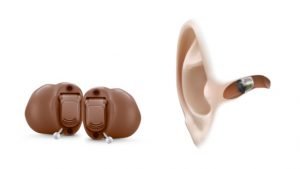
- Smallest option available.
- Sits deeply in ear canal making it the most discreet option.
- Due to the depth of placement, sound quality and sound of the wearer’s own voice is improved.
- Good option for those in windy conditions.
- Uses very small batteries requiring more battery changes.
- Small batteries are difficult to change, particularly for those with dexterity issues/arthritis.
- Due to the small size, often cannot fit a memory button or volume control and cannot use wireless products.
Custom Completely in the Canal (CIC):
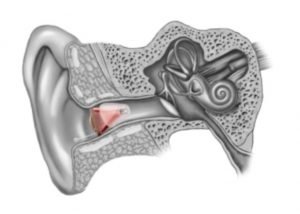
- Slightly larger than IIC.
- Small/discreet.
- Good option for those in windy conditions.
- Uses very small batteries requiring more battery changes.
- Small batteries are difficult to change, particularly for those with dexterity issues/arthritis.
- Can sometimes be fit with memory button or volume control.
- Some options can accommodate wireless/bluetooth functionality.
Custom In the Canal (ITC):
- Slightly larger than ITC; some of the device can be seen at the entrance of the ear canal but is less visible than other larger custom options.
- Battery is larger than IIC/CIC versions and therefore does not need to be changed as frequently.
- Can be fit with memory button or volume control.
- Can accommodate wireless/bluetooth functionality.
- Easier to insert and remove from ear canal.
Custom In the Ear (ITE):
- The largest of the custom earpieces makes it easier for those with dexterity problems/arthritis to handle.
- Battery is larger than IIC/CIC versions and therefore does not need to be changed as frequently.
- Can be fit with memory button or volume control.
- Can accommodate wireless/bluetooth functionality.
- Easier to insert and remove from ear canal.
Behind the Ear (BTE):
- All components are housed in the case of the hearing aid that rests on top of the ear. The most durable option of hearing aid and often used for children for this reason.
- Battery is larger allowing for less frequent battery changes than custom options.
- Rechargeability: some new BTEs allow for rechargeable battery options.
- Often have a memory button or volume control.
- Can accommodate wireless/bluetooth functionality.
- May be more noticeable to others, particularly on men.
Receiver in the Canal (RIC):
- Smaller option than a traditional BTE, but also rests on top of the ear.
- With the speaker portion of the device sitting deeply in the ear canal, sound quality is improved and the risk for acoustic feedback (hearing aid whistle) is greatly reduced.
- Rechargeability: some new RICs offer rechargeable battery options.
- Can be fit with memory button or volume control.
- Can accommodate wireless/bluetooth functionality.
- Often more discreet than traditional BTE.
- More susceptible to wax clogging the speaker than BTE option.
- Allows the ear canal to remain more “open” making the wearer’s own voice more comfortable.
Work with your audiologist to determine the best style for your needs. If you have questions or are interested in learning more about hearing aids and other hearing technology, call the experts at Michigan ENT and Allergy Specialists at 616-994-2770.
*Photo credits: Signia/Siemens and Oticon.

